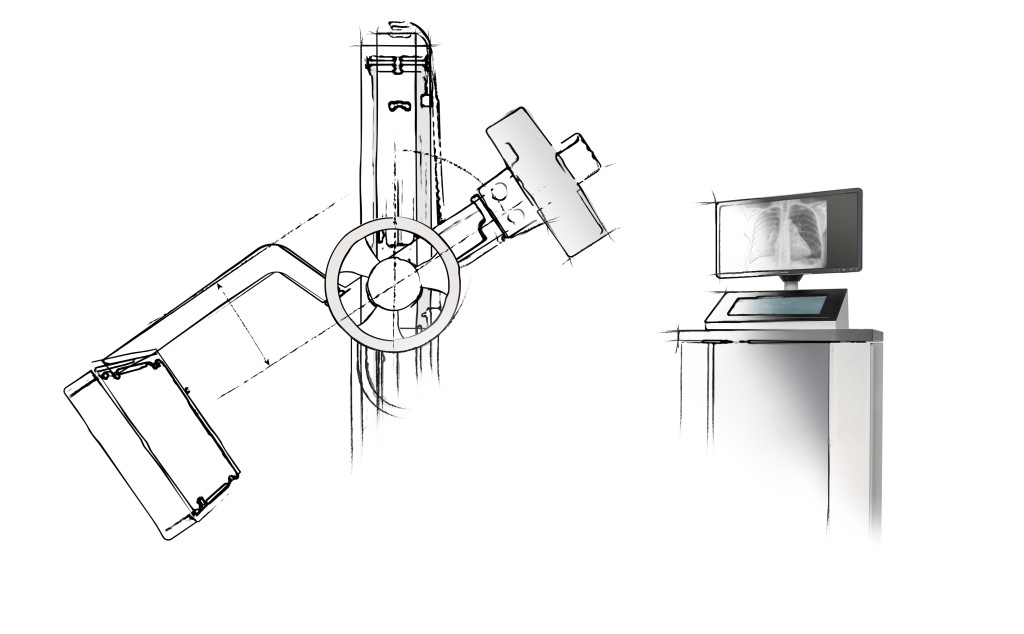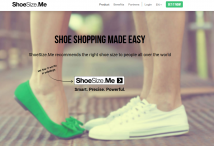
Any LIFT conference-goer could have spent a good part of Friday, February 12th at LIFT16 exploring the projects on display in the main hall of the International Conference Center. Interactive stands and installations were everywhere, as startups took center-stage to explain their innovative approaches in the relationship between humans and technology. Here are a few that captured the audience’s attention.

Sketch of Pristem's portable X-ray system.
Pristem
Pristem is a universal medical device which is designed for primary health care needs. It is the first fully digital X-ray system engineered for developing countries, where more than half of the human population still has no access to basic medical imaging. Although digital X-ray imaging is common technology now in Europe, it is still an expensive solution for the developing world, where traditional analog devices are still in use. A disadvantage of the older technology is that it uses traditional film to print out images, which requires bulky accessories and, more importantly, dangerous chemicals.
Leaders of the innovation said that it might even be possible to load Pristem on the back of a truck and run it as a mobile clinic, which would be helpful for reaching remote locations.
Nowy Connect
LIFT16 had its own private socializing application on site. Nowy Connect is a mobile networking application that uses Bluetooth Low Energy (BLE) to connect and tell users who else is around them. Contrary to many localizing applications, it does not use a GPS signal to determine the proximity, only BLE technology.
Nowy Connect is an ongoing project designed by Silviu Andrica's team at EPFL. It uses IBM’s artificial intelligence framework, Watson.
During LIFT16, attendees were able to use Nowy Connect to find and connect with nearby people. An efficient and creative way of making professional connections, Nowy Connect takes profile data from Linkedin, and allows users to see other people’s profiles. It is also possible to interact within the application: instead of exchanging business cards and losing them later, Nowy Connect users can simply save the profiles via this application onto their smartphones.
Because it is in real time, Nowy Connect has the potential to create value for event organizers, allowing them to track the attendance and allow their attendees to connect with others in a very simple way.
The only down side of the application is that it requires an IOS device to run. It is not yet available on Android.
Artanim Interactive
Without a doubt, Artanim was one of the stars of the LIFT16 exhibit. Their interractive virtual reality demonstration was never without a queue of people patiently waiting their turn to test the demo.
The system is a combination of a virtual reality headset and motion capture. Many are already familiar with virtual reality systems, thanks to Google’s cardbox application and Samsung’s GEAR technology, which allows users to put their phones into a helmet and to explore videos and photos in 360 degrees. As the motion sensors used in mobile phones get more advanced, the virtual reality experience gets better.

The second component, motion capture, is a well-known cinema technique. By placing sensors onto the body of an actor and using surrounding detectors, filmmakers can capture the movements of the actor and convert it into something Hollywood-worthy. An example is how Gollum in the movie Lord of the Rings was created.
Now, Artanim put these two concepts together, and developed an interactive virtual reality system. It lets users into an imaginary world, where they can walk and interact with objects and others, while the motion sensors on the user and on other moving objects affect the image inside of the helmet. For another movie reference, it feels similar to being in the Matrix.
This technology is quite promising for the entertainment industry. It could also find uses in any kind of simulation. For example, it could be used to train astronauts before sending them into the space.
Right now, as is often the case with new technology, the main difficulty is the cost. It will take some time to move from the innovation stage to actual physical commercialization.
HEAD - Genève, MA Media Design
The Geneva’s School of Art and Design (HEAD Genève) presented five projects at LIFT16, each questioning our relationship with technology. The Masquerade project by Felicien Goguey was quite impressive. According to Goguey’s description, Masquerade is based on obfuscation. It is a strategy that consists of publishing a certain amount of incorrect data in order to protect privacy.
 When connected to the internet, the Masquerade device generates small suspicious messages that include trigger words, and sends them to other Masquerade devices. When sent in large numbers, these messages create noise that overruns the network and disrupts the mass surveillance efforts of security organizations. As governmental organizations constantly monitor internet traffic because of security concerns, the Masquerade project takes a position on privacy rights.
When connected to the internet, the Masquerade device generates small suspicious messages that include trigger words, and sends them to other Masquerade devices. When sent in large numbers, these messages create noise that overruns the network and disrupts the mass surveillance efforts of security organizations. As governmental organizations constantly monitor internet traffic because of security concerns, the Masquerade project takes a position on privacy rights.
The device, by creating each message uniquely, does not let anyone categorize messages coming from the device as a bot or spam. The project will soon be released under an open source license.
shoesize.me
Shoesize.me was one of the most impressive ideas at LIFT16. It clearly showed that innovation starts with a basic need and creates simple solutions. Online shopping is not necessarily a new trend. Most of us have bought something online, and most retailers have an online store (even the Migros has one). However, when we want to buy shoes, the Internet is still far behind traditional brick-and-mortar stores in terms of sales, mainly due to fitting issues. Each country has its own size system, and shoe producers have their own casts, meaning that a size 42 may not be the same for different brands.
 By seeing and analyzing the needs, shoesize.me introduced a service. Customers simply enter the size and brand of their most comfortable shoes, and indicate which other brand and model they want to buy. Then, the system will tell the buyer which size and model in this brand will fit best.
By seeing and analyzing the needs, shoesize.me introduced a service. Customers simply enter the size and brand of their most comfortable shoes, and indicate which other brand and model they want to buy. Then, the system will tell the buyer which size and model in this brand will fit best.
Shoesize.me uses a self-learning database to include new models and brands. Its success is also based on the number of users who input their data.
These are just a few of the numerous innovations that unveiled themselves to the audience at LIFT16. Other projects can be found on LIFT16’s web page.
Overall, it was very motivating to see such innovations at LIFT16. It proves how technology can be put to good use and improve the human experience.
Photo credits: Ivo Naepflin via Flickr for Lift16
When I read such articles, I'm amazed at the age we're living and all the innovations that come with it.
The Masquerade project looks really promising, especially when data security is such a hot topic.